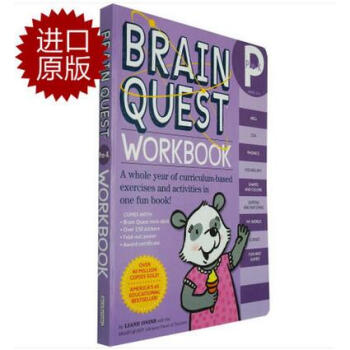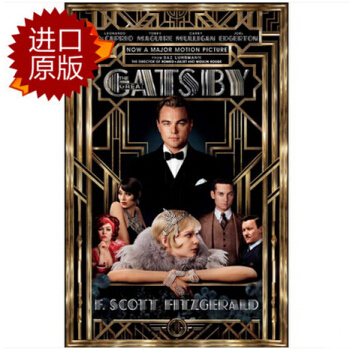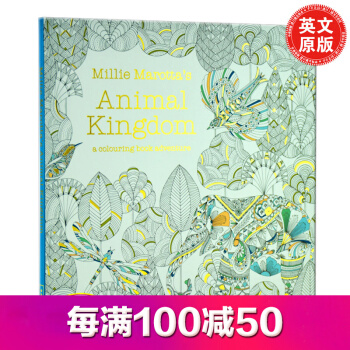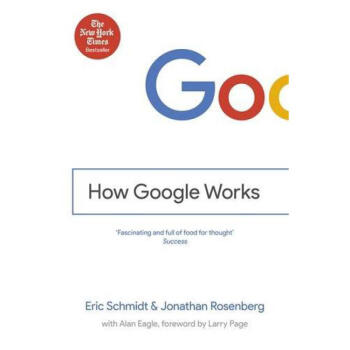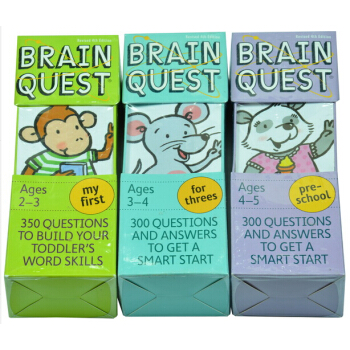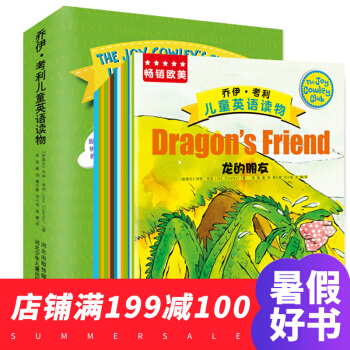![Pop! A Book About Bubbles (Let's-Read-and-Find-Out Science, Stage 1) [平装] [4岁及以上]](https://pic.tinynews.org/19095669/550bf643Nb87d4a2b.jpg)

具体描述
内容简介
BubblesWhat are bubbles made of?Why are they always round?Read and find out about the science behind soap bubbles, and learn why bubbles always go POP作者简介
Kimberly Brubaker Bradley is the author of Energy Makes Things Happen and Pop!, an Outstanding Science Trade Book for Children, in the Let's-Read-and-Find-Out Science series. She has a degree in chemistry from Smith College and lives with her husband and two children in Bristol, Tennessee.精彩书评
Kirkus What makes a bubble? Why does it pop? What makes it round? These and a dozen other questions are clearly explained in a brief, readable text in this "Let's-Read-And-Find-Out" Stage 1 science title. Bradley (Weaver's Daughter, 2000, etc.), a chemist and a mother of two enthusiastic bubble blowers, is right on target with questions and answers. Explaining that the air inside the soapy skin of a bubble doesn't push out more in one place or another, she effectively offers a mini-physics lesson. Moving on to demonstrate other liquids, she explains why some bubbles pop easier than others. Clear color photographs help to demonstrate each idea, using a racially mixed group of boys and girls blowing, popping, and examining big and little bubbles in various liquids. The author concludes with a recipe for making bubble solution and additional experiments with bubbles. Young readers (and their parents) will have a good time learning new science thanks to this playful offering. (Nonfiction. 5-8) Children's Literature What are bubbles made of? Why are they round? Why do they always pop? Investigate the basic science of bubbles with an author who has a degree in chemistry. Vivid photographs and clear, simple text introduce young children to science and help answer questions about one of childhood's greatest joys. Bubbles are simply air trapped inside liquid. They are round because the air inside pushes out evenly against the liquid skin. Bubbles eventually pop because their liquid skin dries out and shrinks, making them unable to hold all the air inside. After learning about bubbles and seeing so many pictures of colorfully captured bubbles, it may be the perfect time to make your own. To do so, follow the bubble solution recipe at the back of the book. You probably have the ingredients in your cupboard. Then you can try some of the experiments that follow. For example, if you make a square shaped wand, will you get square shaped bubbles? All young scientists should give it a try. Part of the "Let's Read-and-Find-out About Science" series. 2001, HarperCollins, $15.95, $15.89, and $4.95. Ages 3 to 6. Reviewer:Barbara Kennedy Fewer Reviews School Library Journal PreS-Gr 1-Bubbles here, bubbles there, bubbles, bubbles, bubbles everywhere-big ones, small ones, single ones, or in a stream. Some float gently, while some pop immediately. No matter what they are made of or how or where they are produced, they are always round, never square. A simple, accurate text that is also fun to read explains these facts. Delightful color photographs of charming children making bubbles and of bubbles floating freely reinforce and extend the text. Children will want to participate themselves to test the data. The book includes a page of experiments and a recipe for making a solution (which may need some adult help to prepare). This is science learning at its best.-Pamela K. Bomboy, Chesterfield County Public Schools, VA Copyright 2001 Cahners Business Information. Kirkus Reviews What makes a bubble? Why does it pop? What makes it round? These and a dozen other questions are clearly explained in a brief, readable text in this "Let's-Read-And-Find-Out" Stage 1 science title. Bradley (Weaver's Daughter, 2000, etc.), a chemist and a mother of two enthusiastic bubble blowers, is right on target with questions and answers. Explaining that the air inside the soapy skin of a bubble doesn't push out more in one place or another, she effectively offers a mini-physics lesson. Moving on to demonstrate other liquids, she explains why some bubbles pop easier than others. Clear color photographs help to demonstrate each idea, using a racially mixed group of boys and girls blowing, popping, and examining big and little bubbles in various liquids. The author concludes with a recipe for making bubble solution and additional experiments with bubbles. Young readers (and their parents) will have a good time learning new science thanks to this playful offering. (Nonfiction. 5-8)前言/序言
用户评价
哇,这本书简直是为我家那个对世间万物充满好奇心的小家伙量身定做的!他现在正处于那种“为什么?为什么?”的阶段,对身边的一切都想刨根问底。我得说,这本书在激发孩子原始探索欲方面做得太到位了。它不是那种枯燥的说教式科普读物,而是充满了活力和趣味性。每次给他读完,他都会立刻跑到户外,开始观察他能找到的任何“小奇迹”,然后用他自己的方式模仿书里的探索过程。那种眼神,那种兴奋劲儿,真是无价之宝。这本书的排版设计也非常出色,色彩鲜明,字体大小适中,即便是刚刚开始认字的宝宝也能被牢牢吸引住。更重要的是,它不只是停留在表面现象的描述上,而是巧妙地引导孩子去思考事物背后的逻辑和规律,这种潜移默化的教育效果,比直接灌输知识要有效得多。我特别欣赏它那种鼓励孩子动手实践的精神,每次读完都会让我们家的小小科学家们迫不及待地想要去验证书里提到的每一个小概念。总的来说,这是一本真正点燃了孩子求知欲的优秀启蒙读物,我们全家都非常喜欢。
评分老实讲,我之前买过不少所谓的“科学启蒙”书,很多都是内容空洞,图画幼稚,读起来简直是一种折磨。但这一本,完完全全不一样!它的叙事节奏把握得恰到好处,既不会因为信息量太大让年幼的孩子感到压力,也不会因为过于简单而显得敷衍。每一次翻页都像是打开了一个全新的、充满惊喜的微观世界。我注意到,这本书在用词的选择上非常讲究,既贴近孩子的生活经验,又能准确地传达出科学概念的核心。这种平衡点拿捏得非常精准,使得即便是那些相对抽象的概念,在孩子的理解中也能变得具体而生动。我儿子现在已经能用几个简单的词汇向我复述书里讲到的某些现象了,这完全得益于这本书流畅自然的语言组织。对于我们这些平时工作忙碌的家长来说,能找到一本既能让我们轻松地给孩子讲故事,又能真正学到东西的读物,简直是太幸运了。它不仅仅是一本书,更像是一个耐心的、懂得如何与孩子沟通的“知识向导”。
评分这本书的设计哲学,似乎完全是以一个四五岁孩子的心智模式为蓝本构建的。它没有使用任何令人生畏的专业术语,而是用一种极其拟人化、充满想象力的方式来描绘那些看似平常却蕴含着深刻物理原理的现象。我尤其欣赏它在视觉上所营造的那种“动态感”,即使是静止的图画,也仿佛能让人感受到那种轻盈、短暂却又不断变幻的美。它成功地将“观察”这一科学研究的基本步骤,融入到了一场充满乐趣的阅读冒险中。孩子在读这本书的时候,不会感到自己是在“学习”,而更像是在“玩游戏”或者“听一个精彩的故事”。这种沉浸式的体验,极大地降低了他们对早期科学探索的畏惧感,培养了一种积极主动探索世界的态度。对于我们家庭来说,这本书已经成为了周末早晨的固定节目,是开启全新一周好奇心之旅的“启动键”。
评分我必须强调一下这套系列丛书的整体水准,单就这一本而言,它已经达到了非常高的标准。它的装帧质量也十分可靠,即便是被经常翻阅、甚至偶尔被“亲密接触”一番(你懂的,小孩子嘛),书本的边角和内页依然保持得相当不错,这对于需要反复阅读的儿童书籍来说至关重要。而且,它成功地避开了许多早期科普读物常犯的错误——那就是内容过于陈旧或地域性太强。这本书所展示和探讨的现象是具有普遍性的,无论孩子身处何地,都能在自己的环境中找到对应的例子进行比对和验证。这种普适性使得它的教育价值更加深远。我感觉,这本书不仅仅是教给孩子关于某一具体事物的知识,更深层次地是在培养一种“科学思维框架”,一种面对未知事物时,不盲从、多提问、勇于尝试去理解其内在机制的健康态度。这是任何技能培训都无法替代的宝贵财富。
评分作为家长,我最看重的是书籍的重复阅读价值。有些书,读个两三次,孩子就厌倦了,因为它所有的“秘密”都被一次性揭示了。但这一本,每次拿出来,总能发现新的乐趣。可能第一次读的时候,孩子只关注鲜艳的插图和简单的故事线;第二次,他可能开始对文字内容产生兴趣,试着模仿书中的某些发音和表达方式;到了第三次,他甚至会开始提出更深入的、关于现象成因的问题,这时候,我们就可以借此机会进行更深层次的讨论和家庭实验。这种随着孩子成长阶段而不断演进的阅读体验,是很多其他绘本无法比拟的。它为我们提供了一个绝佳的亲子互动平台,让科学不再是遥不可及的课本知识,而是我们日常生活中随处可见、可以一起探索的美妙事物。这本书的价值在于它的“长尾效应”,能陪伴孩子度过好几年的探索期。
评分好书,有原版mp3就更好了
评分希望京东的进口原版书越来越多。希望京东的进口原版书越来越多。希望京东的进口原版书越来越多。let系列都很好。引进的中文版也买了。let系列都很好。引进的中文版也买了。let系列都很好。引进的中文版也买了。希望京东的进口原版书越来越多。希望京东的进口原版书越来越多。希望京东的进口原版书越来越多。let系列都很好。引进的中文版也买了。let系列都很好。引进的中文版也买了。let系列都很好。引进的中文版也买了。希望京东的进口原版书越来越多。希望京东的进口原版书越来越多。希望京东的进口原版书越来越多。let系列都很好。引进的中文版也买了。let系列都很好。引进的中文版也买了。let系列都很好。引进的中文版也买了。希望京东的进口原版书越来越多。希望京东的进口原版书越来越多。希望京东的进口原版书越来越多。let系列都很好。引进的中文版也买了。let系列都很好。引进的中文版也买了。let系列都很好。引进的中文版也买了。希望京东的进口原版书越来越多。希望京东的进口原版书越来越多。希望京东的进口原版书越来越多。let系列都很好。引进的中文版也买了。let系列都很好。引进的中文版也买了。let系列都很好。引进的中文版也买了。希望京东的进口原版书越来越多。希望京东的进口原版书越来越多。希望京东的进口原版书越来越多。let系列都很好。引进的中文版也买了。let系列都很好。引进的中文版也买了。let系列都很好。引进的中文版也买了。希望京东的进口原版书越来越多。希望京东的进口原版书越来越多。希望京东的进口原版书越来越多。let系列都很好。引进的中文版也买了。let系列都很好。引进的中文版也买了。let系列都很好。
评分好书,有原版mp3就更好了
评分好书,有原版mp3就更好了
评分好书,有原版mp3就更好了
评分好书,有原版mp3就更好了
评分很好的科学绘本,非常喜欢
评分好书,有原版mp3就更好了
评分好书,有原版mp3就更好了
相关图书
本站所有内容均为互联网搜索引擎提供的公开搜索信息,本站不存储任何数据与内容,任何内容与数据均与本站无关,如有需要请联系相关搜索引擎包括但不限于百度,google,bing,sogou 等
© 2025 book.idnshop.cc All Rights Reserved. 静思书屋 版权所有

![Is There Life in Outer Space? (Let's-Read-and-Find-Out Science 1) [平装] [4-8岁] pdf epub mobi 电子书 下载](https://pic.tinynews.org/19095693/550bf644N2e439181.jpg)
![Star Wars: The Complete Visual Dictionary[星球大战:完整的视觉词典] [精装] [7岁及以上] pdf epub mobi 电子书 下载](https://pic.tinynews.org/19135743/77f84f7a-74e8-4eb3-bc83-1d6c7103da78.jpg)
![The Doodles of Sam Dibble #1 [平装] [6-8岁] pdf epub mobi 电子书 下载](https://pic.tinynews.org/19278737/rBEQWFE1lMcIAAAAAADl0pUmdYsAABf6gBLWfgAAOXq537.jpg)
![Kingdom Come {New Edition} 英文原版 [平装] pdf epub mobi 电子书 下载](https://pic.tinynews.org/19352640/rBEhWlJbXNkIAAAAAACwxqzNzUEAAEGrQEGCCQAALDe099.jpg)
![Writing to Win: The Legal Writer [平装] pdf epub mobi 电子书 下载](https://pic.tinynews.org/19360662/rBEhVFJUzAIIAAAAAABX048YMs0AAD6wgEQKhMAAFfr260.jpg)
![Fluent Forever: How to Learn Any Language Fast and Never Forget it 英文原版 [平装] pdf epub mobi 电子书 下载](https://pic.tinynews.org/19478869/53e0527fN92b76d61.jpg)
![Cracking the SAT Chemistry Subject Test, 15th Ed 英文原版 [平装] pdf epub mobi 电子书 下载](https://pic.tinynews.org/19515502/559b38aaN79d69124.jpg)
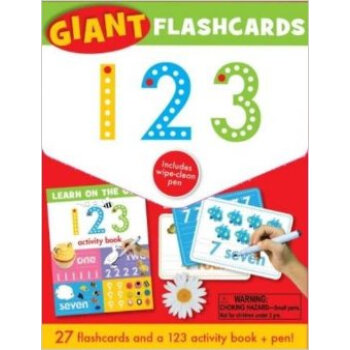
![Mini Mbi Baby Animals Colouring Book [平装] pdf epub mobi 电子书 下载](https://pic.tinynews.org/19567147/5af94f9fNf35c244b.jpg)
![Can I Build Another Me? 我可以培养另一个我吗? 英文原版 [平装] pdf epub mobi 电子书 下载](https://pic.tinynews.org/19641819/5af94fa6N8f8039bb.jpg)
![Read-Aloud Rhymes for the Very Young [平装] [04--08] pdf epub mobi 电子书 下载](https://pic.tinynews.org/19665302/5767acddN30621ad8.jpg)
